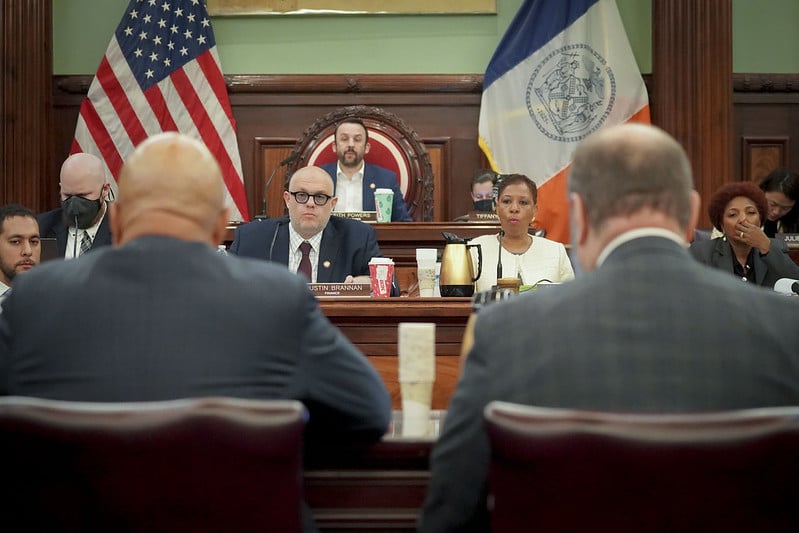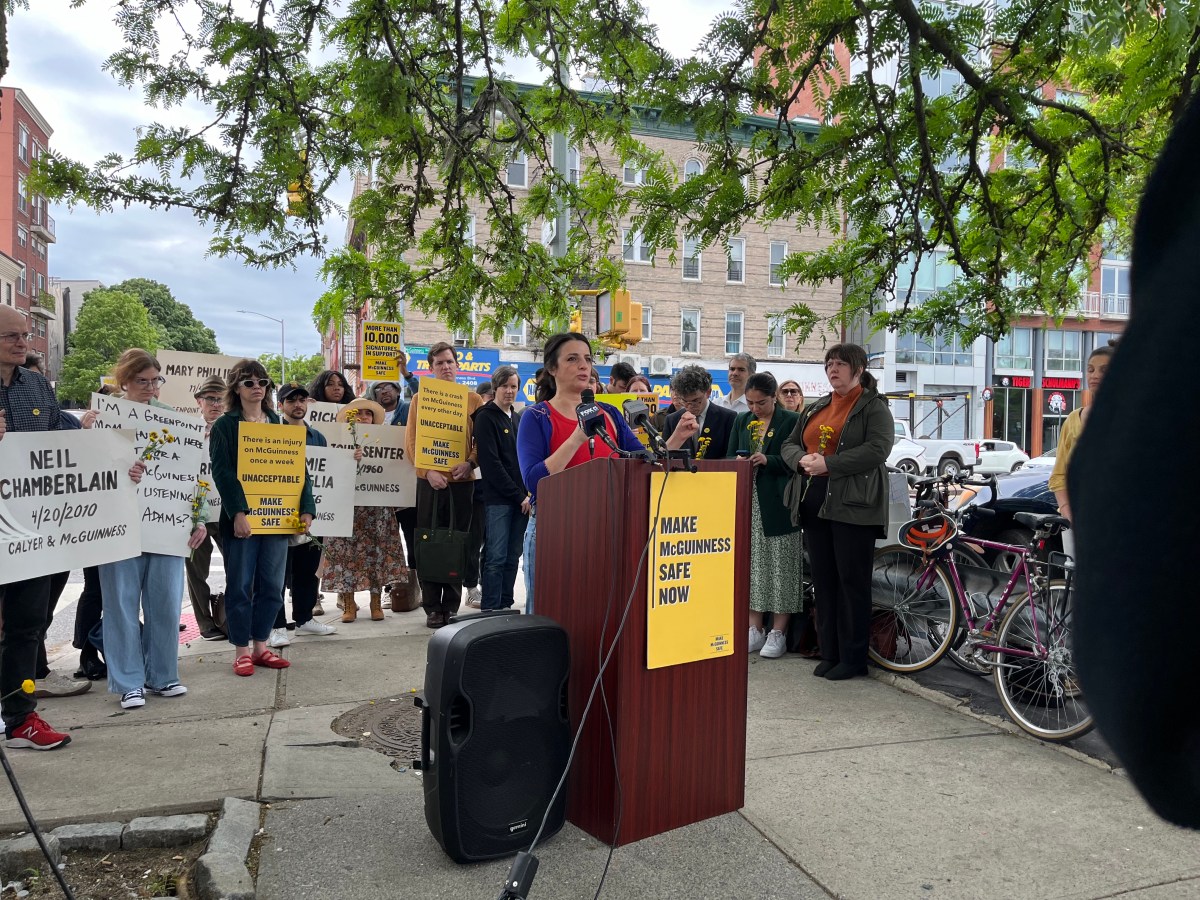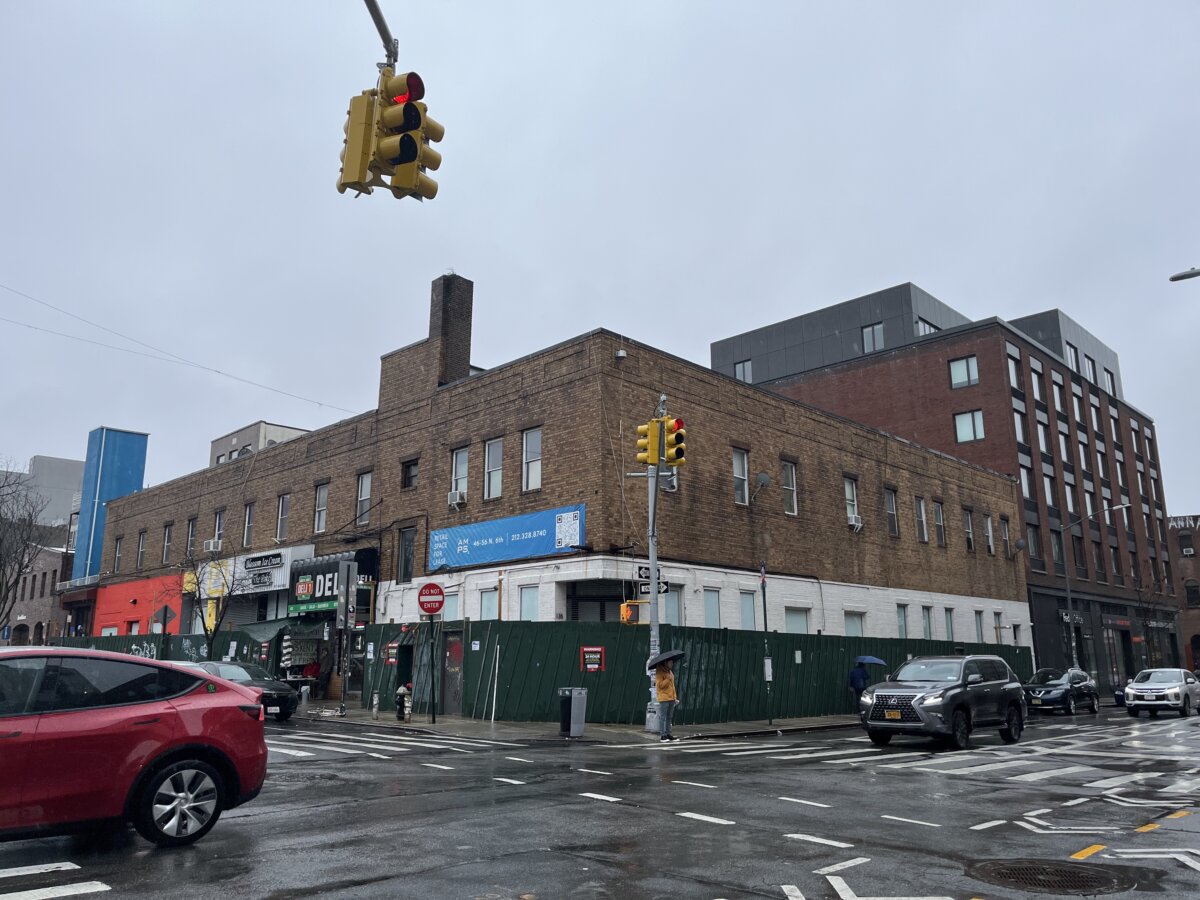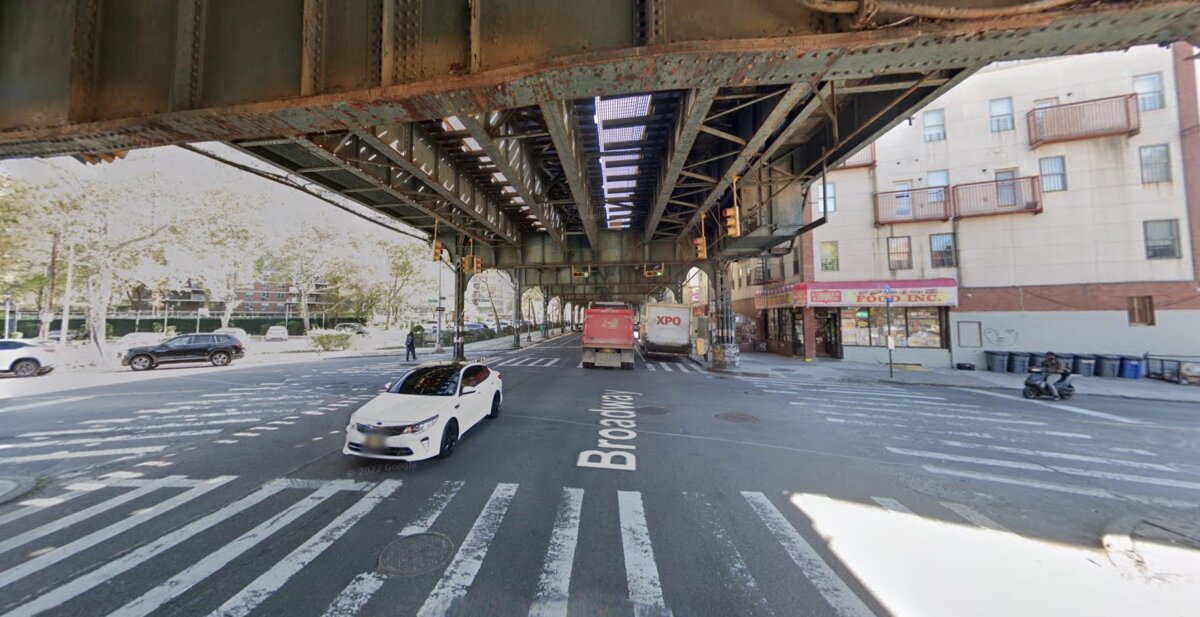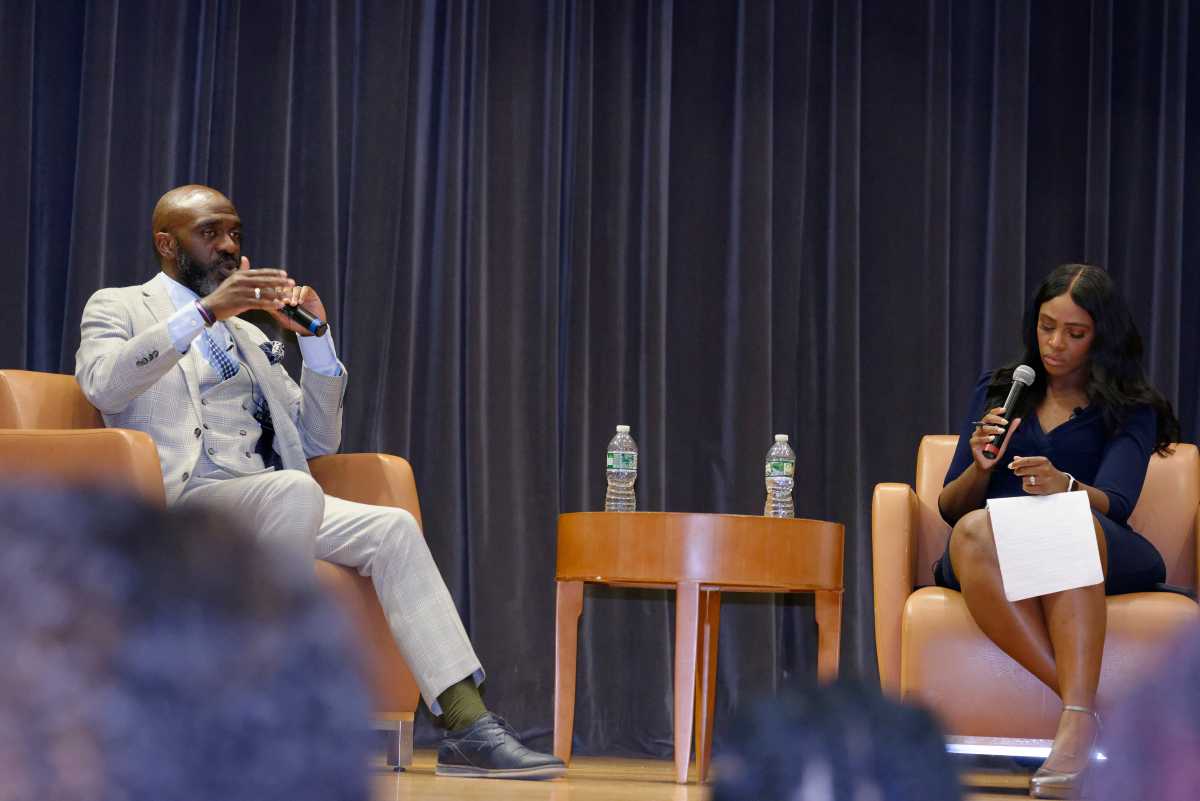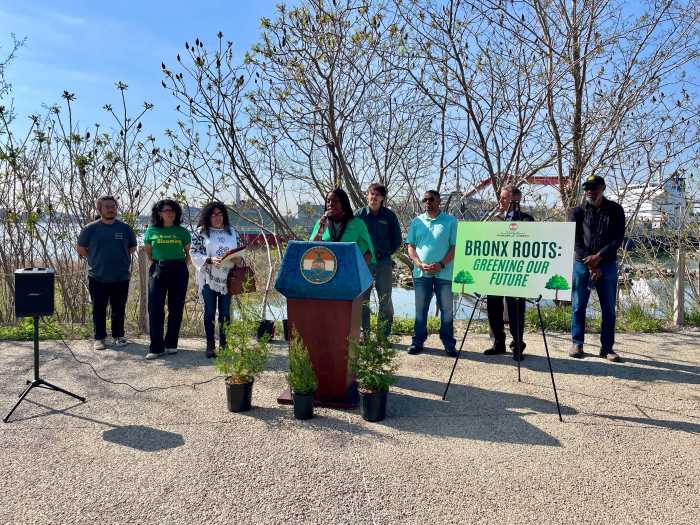Opponents of Mayor Eric Adams’ recently-enacted deep budget cuts got the chance to push back against them on Monday at a City Council hearing, stressing the reductions will decimate vital services and the city has enough revenue to stave off some of the damage.
Council members stressed the potential impact of Adams’ wide-ranging latest 5% budget cuts — enacted last month and totaling $3.7 billion — during a tense hours-long session and preceding rally on Dec. 11. They highlighted the many ways in which the broad spending reductions would curtail city services such as litter basket collection, public library hours and early childhood education.
Adams made the cuts last month as a means of closing a projected $7.1 billion budget shortfall in Fiscal Year 2025, which his administration says is driven by spending to accommodate tens of thousands of recently arrived migrants. The council quibbles with that assertion, arguing there are many other factors causing the city’s fiscal woes, like dwindling federal COVID-19 era aid, commercial office vacancies and projected period of slower tax revenue growth in the near future.
Adams says he will also call for two more rounds of 5% cuts in his January preliminary budget and April executive budget plans for Fiscal Year 2025. His administration has also moved to reduce spending on services for recently arrived migrants by 20%.
‘Our approach must be surgical and strategic’
During the hearing, Council Speaker Adrienne Adams argued that the mayor’s across-the-board approach to cutting the budget will hurt everyday New Yorkers and that the administration must find savings in a more targeted fashion.
“Our approach must be surgical and strategic, prioritizing the investments that we need to safeguard for New Yorkers,” the speaker said during her testimony. “Cutting every agency’s budget indiscriminately will disproportionately impact everyday New Yorkers. The essential services that New Yorkers rely upon like educational programs that provide stability for people, our library programs and sanitation services that keep our streets clean must be protected.”
The council’s Progressive Caucus, which has stood staunchly against Mayor Adams’ current and previous rounds of budget cuts, stressed the latest belt-tightening measure would have devastating consequences for people across the five boroughs during a rally before the hearing.
“Mayor Adams has one move, he’s done it five times in two years,” Council Member Lincoln Restler (D-Brooklyn), who co-chairs the caucus, said during the rally. “His one move is to cut. It’s to cut, it’s to cut and it’s to cut again. Cut our libraries, cut our after school programs, cut early childhood education. It is wrong. It is shameful.”
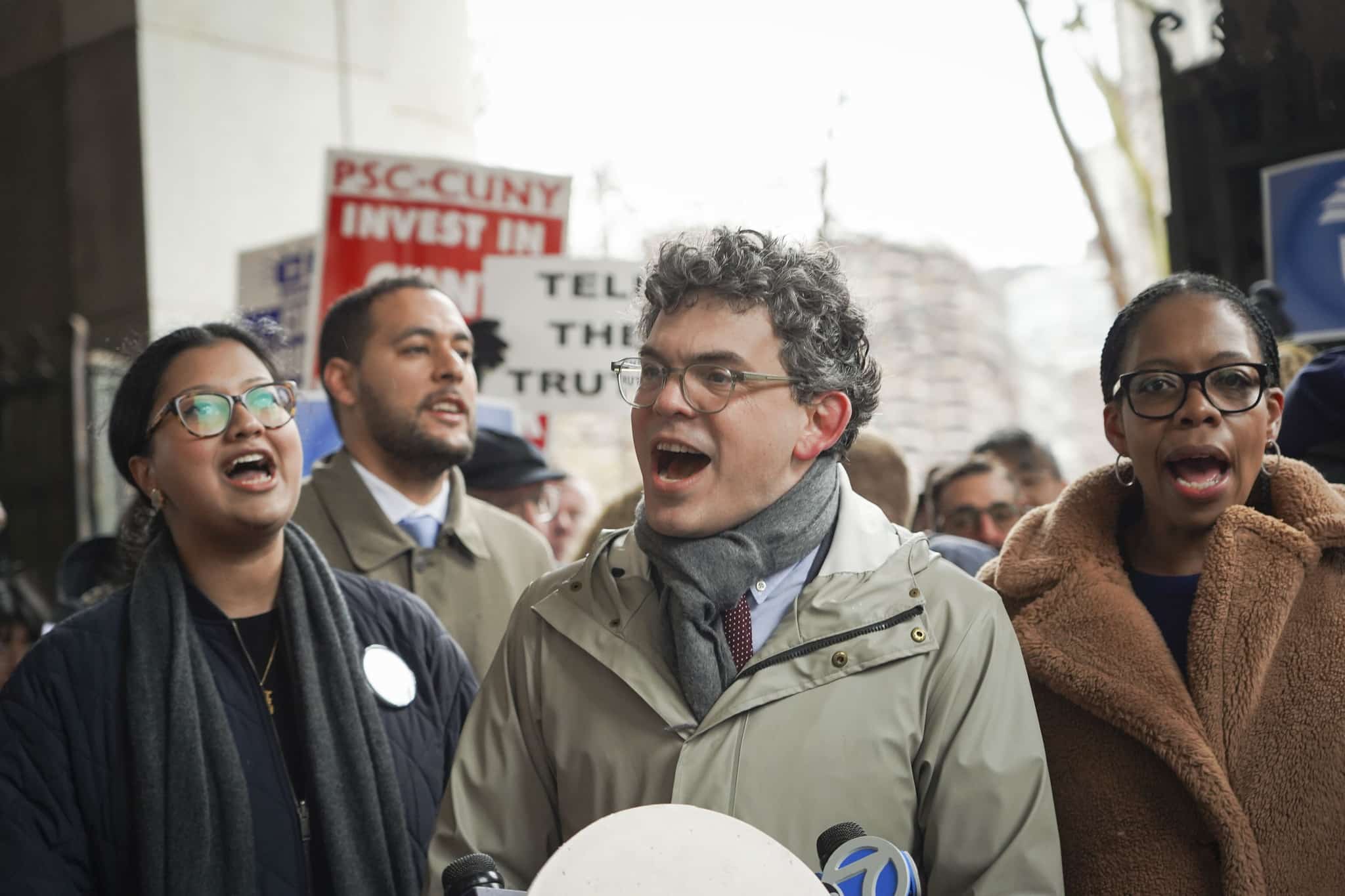
The cuts are also unnecessary, Restler said. He pointed to the council’s latest revenue projection, which is $1.2 billion higher than the administration’s, giving the city room to avoid some of the painful reductions. The city’s Independent Budget Office also projected the FY25 budget gap to be $5.3 billion lower than OMB, according to a report it released Monday.
‘Revenue alone’ won’t close gap
But when asked by Council Finance Chair Justin Brannan about the additional projected revenue, Mayor’s Office of Management and Budget Director Jacques Jiha said it will not be enough to close the deficit.
“The message I want to communicate, to convey, is that revenue alone will not close the existing budget gap,” Jiha told council members. “I’m not saying that the $1.2 billion is not money, it’s money. But we need … other tools to deal with a problem of this size.”
Jiha said his office will update its own revenue forecast with the release of the mayor’s preliminary budget.
The budget director also insisted his office made an effort to “minimize” the impact of the spending cuts on services, with most of the reductions — 82% — not touching city programs. Instead, he said, the majority of the trims consisted of cutting vacant positions and cost re-estimates.
One of the more striking impacts of the cuts is a reduction in Department of Sanitation litter baskets in the outer-boroughs. But Jiha said the reduction would not affect the frequency with which trash bins are serviced and would focus on areas where there is “underutilization,” which does not include busy commercial districts.
Defending libraries
Progressive Council Member Chi Ossé (D-Brooklyn) — who chairs the council’s Cultural Affairs Committee — questioned why the administration is reducing the budgets of the city’s three public library systems instead of an agency that would have less of a direct impact on New Yorkers’ everyday lives. Ossé pointed to $400 million in controversial upgrades to encrypt the NYPD’s radio channels that could have been cut instead of library funding.
“Any 5% cut to the already small library budget will be immediately felt by New Yorkers,” Ossé said. “So I want to ask what is the admin’s rationale behind this particular [cut]? Why is there a cut here, when there can be cuts elsewhere that won’t be felt as harshly by New Yorkers?”
Jiha responded that the city gave the libraries a subsidy and they chose how to allocate those funds how they saw fit, so the libraries could have made “different choices.”
He added that his office has few options when it comes to cutting from agencies that are vital to New Yorkers, because the money has to come from somewhere in order to close the $7 billion gap by January.
“Our job is to come up with a plan, we have no choice to say you know what ‘I’m not gonna cut this, I’m gonna cut this, cut this,’ we don’t have that luxury,” Jiha said. “We have to come up with a plan in 37 days to close a $7.1 billion gap.”
Read more: Mayor signs bill for NYC housing growth targets to tackle crisis.



